 Search by Keyword
Sign Up Below for our MONTHLY BEATLES TRIVIA QUIZ!
|
“HELLO GOODBYE”
(John Lennon – Paul McCartney)
Not everyone was prepared for the musical growth that The Beatles unleashed in the year 1967. The family-friendly image of the early Beatles seemed only moments before, but then all of a sudden, “Love Me Do” and “I Want To Hold Your Hand” turned into “Strawberry Fields Forever” and “Lucy In The Sky With Diamonds.”
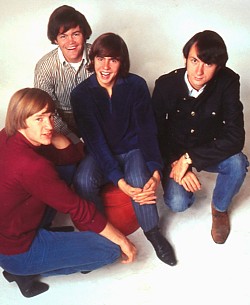 “Oh, I get it. You don’t want to be cute anymore,” said Bob Dylan when he first heard the “Sgt. Pepper” album. “I don’t want to be a mop-top,” John Lennon stated in 1967, continuing, “For those who want mop-tops, The Monkees are right up there, Man!...Let ‘em all dig their cuddly mop-tops till they change their minds. The Monkees are up there to be screamed at…and we’re in such a groove!” “Oh, I get it. You don’t want to be cute anymore,” said Bob Dylan when he first heard the “Sgt. Pepper” album. “I don’t want to be a mop-top,” John Lennon stated in 1967, continuing, “For those who want mop-tops, The Monkees are right up there, Man!...Let ‘em all dig their cuddly mop-tops till they change their minds. The Monkees are up there to be screamed at…and we’re in such a groove!”
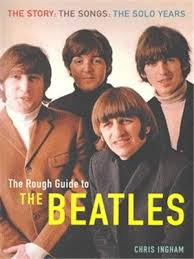 As The Monkees were riding the crest of the wave that The Beatles originally paved the way for, John, Paul, George and Ringo were determined to spread their wings, expand their minds and “float downstream.” As Chris Ingham writes in his book “The Rough Guide To The Beatles,” “the world didn’t seem quite ready.” As The Monkees were riding the crest of the wave that The Beatles originally paved the way for, John, Paul, George and Ringo were determined to spread their wings, expand their minds and “float downstream.” As Chris Ingham writes in his book “The Rough Guide To The Beatles,” “the world didn’t seem quite ready.”
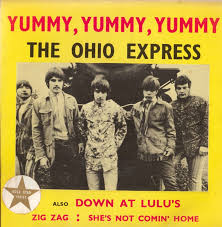 But, as if to quench the thirst of the fans who longed for simpler music with more accessible lyrics, The Beatles released their final single of the year, “Hello Goodbye.” No drugs or meditative practices are necessary to understand the lyrics, which contained no hidden innuendos or deeper meanings. It’s as if the group was saying, ‘Why don’t we put aside all the heady imagery of the year and let’s all just sing along.’ Seven weeks at #1 in the UK (tied for the longest running chart-topper in their home country) and three weeks in the US made it their biggest hit of the year. Its nursery-rhyme-like accessibility was quickly copied in 1968 by bubblegum groups like Ohio Express and 1910 Fruitgum Co, but only The Beatles could pull off such a lyrically simplistic tune with style. But, as if to quench the thirst of the fans who longed for simpler music with more accessible lyrics, The Beatles released their final single of the year, “Hello Goodbye.” No drugs or meditative practices are necessary to understand the lyrics, which contained no hidden innuendos or deeper meanings. It’s as if the group was saying, ‘Why don’t we put aside all the heady imagery of the year and let’s all just sing along.’ Seven weeks at #1 in the UK (tied for the longest running chart-topper in their home country) and three weeks in the US made it their biggest hit of the year. Its nursery-rhyme-like accessibility was quickly copied in 1968 by bubblegum groups like Ohio Express and 1910 Fruitgum Co, but only The Beatles could pull off such a lyrically simplistic tune with style.
Songwriting History
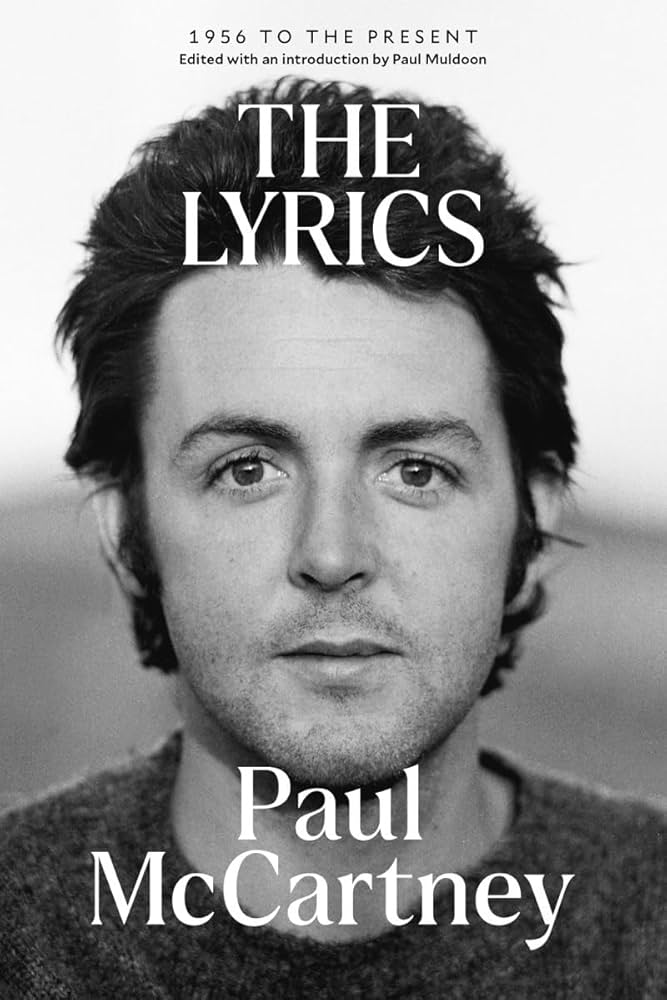 “’Hello Goodbye’ was one of my songs,” writes Paul in his 1997 book “Many Years From Now.” "There are Geminian influences here I think: the twins. It’s such a deep theme in the universe, duality – man woman, black white, ebony ivory, high low, right wrong, up down, hello goodbye – that it was a very easy song to write. It’s just a song of duality, with me advocating the more positive. ‘You say goodbye, I say hello…You say stop, I say go.’ I was advocating the more positive side of the duality, and I still do to this day. " In the 2023 paperback edition of his book "The Lyrics," Paul states, "I'm attacted to the binary," this word being defined as "relating to, composed of, or involving two things." McCartney continues: "I had this theory that, being a Gemini, which is sort of half-and-half, I'm very attracted to playing with opposites. I was born in the middle of the year. Six months had gone by and there were six still to come." “’Hello Goodbye’ was one of my songs,” writes Paul in his 1997 book “Many Years From Now.” "There are Geminian influences here I think: the twins. It’s such a deep theme in the universe, duality – man woman, black white, ebony ivory, high low, right wrong, up down, hello goodbye – that it was a very easy song to write. It’s just a song of duality, with me advocating the more positive. ‘You say goodbye, I say hello…You say stop, I say go.’ I was advocating the more positive side of the duality, and I still do to this day. " In the 2023 paperback edition of his book "The Lyrics," Paul states, "I'm attacted to the binary," this word being defined as "relating to, composed of, or involving two things." McCartney continues: "I had this theory that, being a Gemini, which is sort of half-and-half, I'm very attracted to playing with opposites. I was born in the middle of the year. Six months had gone by and there were six still to come."
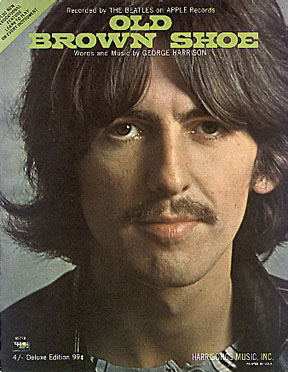 “Duality,” as Paul described above, was also purposely infused into a later Beatles song, George Harrison’s “Old Brown Shoe.” In his book "I Me Mine," George states that he “began writing ideas for the words from various opposites…Again, it’s the duality of things – yes no, up down, left right, right wrong, etcetera.” “Duality,” as Paul described above, was also purposely infused into a later Beatles song, George Harrison’s “Old Brown Shoe.” In his book "I Me Mine," George states that he “began writing ideas for the words from various opposites…Again, it’s the duality of things – yes no, up down, left right, right wrong, etcetera.”
As for “Hello Goodbye,” John corroborates that he was not involved in the composition at all. “That's another McCartney,” John stated in 1980, “an attempt to write a single. It wasn't a great piece.” However, it appears that Paul worked with another collaborator of sorts on the song.
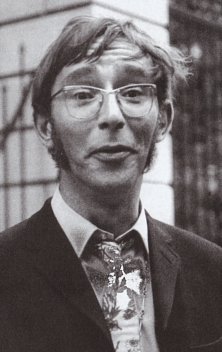 Alistair Taylor, manager Brian Epstein’s personal assistant who was affectionately known as “Mr. Fixit,” relates an event that occurred sometime around August of 1967. “When Jane had gone, Paul used to phone me and say, ‘I’m fed up, could you come up to Cavendish Avenue, and we’ll have a Scotch and Coke?’ So, this night, we were sitting, and he said to me, ‘Have you ever thought about writing music?’ So, I said, ‘Good grief, no.’ So, he said, ‘It’s dead easy. Anybody can write a song.’ So, I said, ‘Oh, come on, Paul. Don’t be silly. If that were the case, everybody would be writing.’ He said, ‘Come on, we’ll write a song.’” Alistair Taylor, manager Brian Epstein’s personal assistant who was affectionately known as “Mr. Fixit,” relates an event that occurred sometime around August of 1967. “When Jane had gone, Paul used to phone me and say, ‘I’m fed up, could you come up to Cavendish Avenue, and we’ll have a Scotch and Coke?’ So, this night, we were sitting, and he said to me, ‘Have you ever thought about writing music?’ So, I said, ‘Good grief, no.’ So, he said, ‘It’s dead easy. Anybody can write a song.’ So, I said, ‘Oh, come on, Paul. Don’t be silly. If that were the case, everybody would be writing.’ He said, ‘Come on, we’ll write a song.’”
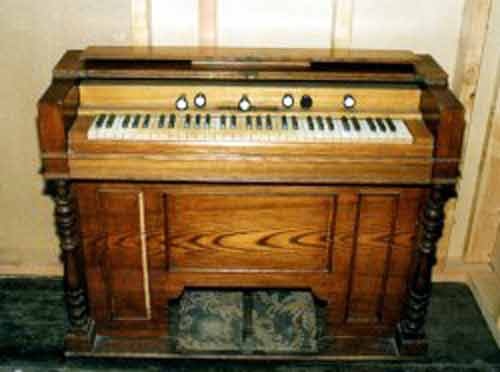 "In his dining room, he had this old hand carved harmonium, you know, a little organ, that you pumped to get the air into it, with big peddles at the bottom. He lifted the lid of this and said, ‘Right, you get on that end, and I’ll get on this end.’ I was at the treble end, and he was at the bass end. And, as we were peddling like mad, he said, ‘What I want you to do is hit any note, any note at all. Don’t worry about what ones; just hit notes with both hands, as you feel like it. I’ll do the same this end, and I’m going to shout out a word, and I want you to shout out the opposite word. That’s all, and then we’ll write a song.’ So, I said, ‘Yes, all right.’” "In his dining room, he had this old hand carved harmonium, you know, a little organ, that you pumped to get the air into it, with big peddles at the bottom. He lifted the lid of this and said, ‘Right, you get on that end, and I’ll get on this end.’ I was at the treble end, and he was at the bass end. And, as we were peddling like mad, he said, ‘What I want you to do is hit any note, any note at all. Don’t worry about what ones; just hit notes with both hands, as you feel like it. I’ll do the same this end, and I’m going to shout out a word, and I want you to shout out the opposite word. That’s all, and then we’ll write a song.’ So, I said, ‘Yes, all right.’”
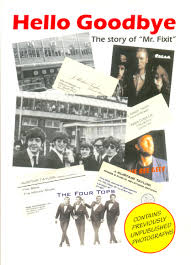 "We started this, and we got the rhythm going, just banging the keys. Then he shouted, ‘White,’ and I shouted, ‘Black,’ and so it went on. ‘Come,’ ‘Go,’ ‘Hello,’ ‘Goodbye,’ we did a few more, and it lasted about five minutes. Then we packed up. He said, ‘There you go, we’ve got a song.’” George Gunby, in his book “Hello Goodbye, The Story Of Mr. Fixit,” adds this detail to their songwriting experiment: “This went on for a little while before things got out of hand as they began throwing swear words into the pot. Alistair laughed so hard he slid off the bench.” "We started this, and we got the rhythm going, just banging the keys. Then he shouted, ‘White,’ and I shouted, ‘Black,’ and so it went on. ‘Come,’ ‘Go,’ ‘Hello,’ ‘Goodbye,’ we did a few more, and it lasted about five minutes. Then we packed up. He said, ‘There you go, we’ve got a song.’” George Gunby, in his book “Hello Goodbye, The Story Of Mr. Fixit,” adds this detail to their songwriting experiment: “This went on for a little while before things got out of hand as they began throwing swear words into the pot. Alistair laughed so hard he slid off the bench.”
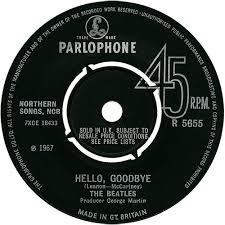 Alistair Taylor thought little of this event other than having an enjoyable time with a good friend until a particular day sometime in November when Paul paid him a visit. As George Gunby relates, “A few weeks later (Alistair Taylor) was toiling away in his office when the door swung open and Paul walked in. ‘Hello,’ Alistair said. ‘And goodbye,’ Paul replied as he tossed a record onto the desk. ‘It’s the new single.’ Alistair picked it up and read the label. It was titled ‘Hello Goodbye’…’What’s this Paul?’ he asked. He pointed at the writing credit of Lennon-McCartney. ‘Surely it should read Taylor-McCartney!” Alistair Taylor thought little of this event other than having an enjoyable time with a good friend until a particular day sometime in November when Paul paid him a visit. As George Gunby relates, “A few weeks later (Alistair Taylor) was toiling away in his office when the door swung open and Paul walked in. ‘Hello,’ Alistair said. ‘And goodbye,’ Paul replied as he tossed a record onto the desk. ‘It’s the new single.’ Alistair picked it up and read the label. It was titled ‘Hello Goodbye’…’What’s this Paul?’ he asked. He pointed at the writing credit of Lennon-McCartney. ‘Surely it should read Taylor-McCartney!”
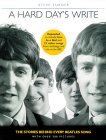 Some may wonder whether any portion of the finished melody was written during this McCartney/Taylor “writing” session. Apparently not, as indicated by Alistair Taylor in Steve Turner’s book “A Hard Day’s Write”: "I have no memory at all of the tune. You have to remember that melodies are as common around The Beatles as bugs in May. Some grow into bright butterflies and others shrivel and die. I wonder whether Paul really made up that song as he went along or whether it was running through his head already." Some may wonder whether any portion of the finished melody was written during this McCartney/Taylor “writing” session. Apparently not, as indicated by Alistair Taylor in Steve Turner’s book “A Hard Day’s Write”: "I have no memory at all of the tune. You have to remember that melodies are as common around The Beatles as bugs in May. Some grow into bright butterflies and others shrivel and die. I wonder whether Paul really made up that song as he went along or whether it was running through his head already."
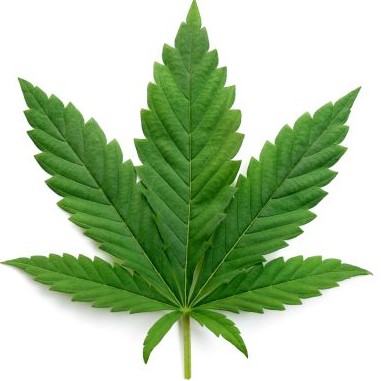 Paul explains some deeper meanings for some of the song's lyrics in the 2023 paperback edition of "The Lyrics." "With 'I say high you say low,' I'm talking about people who aren't coming along with what we're doing as a new generation. Stick in the muds. I knew quite a few people like that. Also, with 'I say high,' we're in the Summer Of Love and the drug references again. And 'you say low,' you know, you don't want to be part of this. You're sort of, you know, a straight person. 'You say why and I say I don't know.' And then it was obvious that you are going to sum it all up. 'You say goodbye and I say hello.' So, you know, I think what I was meaning was, 'I am being positive and I think a lot of the time, you are being negative. And I think it's just too easy to be negative. So I am encouraging you to be positive. You say goodbye. I am going, no hold on there, I am saying hello.'" Paul explains some deeper meanings for some of the song's lyrics in the 2023 paperback edition of "The Lyrics." "With 'I say high you say low,' I'm talking about people who aren't coming along with what we're doing as a new generation. Stick in the muds. I knew quite a few people like that. Also, with 'I say high,' we're in the Summer Of Love and the drug references again. And 'you say low,' you know, you don't want to be part of this. You're sort of, you know, a straight person. 'You say why and I say I don't know.' And then it was obvious that you are going to sum it all up. 'You say goodbye and I say hello.' So, you know, I think what I was meaning was, 'I am being positive and I think a lot of the time, you are being negative. And I think it's just too easy to be negative. So I am encouraging you to be positive. You say goodbye. I am going, no hold on there, I am saying hello.'"
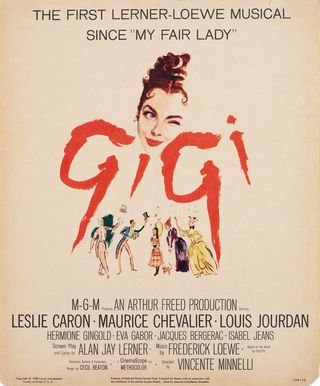 McCartney also cites inspiration from the classics of the past, continuing, "Long before I wrote these lyrics, I knew that there was a rich tradition of songs that used the techniques of antithesis and contradiction." Paul references the Gershwins song "Let's Call The Whole Thing Off" as well as the Maurice Chevalier and Hermione Gingold song "I Remember It Well" as heard in the 1958 musical "Gigi." "Chevalier's call 'We met at nine,' is met with Gingold's response, 'We met at eight.' 'I was on time...' 'No, you were late.' I love that Chevalier just gives in, like it's a little game - which of course it was. 'Oh yes, I remember it well.' Well, you obviously don't, Monsier Chevalier. But we love it. It's charming and a little quaint." McCartney also cites inspiration from the classics of the past, continuing, "Long before I wrote these lyrics, I knew that there was a rich tradition of songs that used the techniques of antithesis and contradiction." Paul references the Gershwins song "Let's Call The Whole Thing Off" as well as the Maurice Chevalier and Hermione Gingold song "I Remember It Well" as heard in the 1958 musical "Gigi." "Chevalier's call 'We met at nine,' is met with Gingold's response, 'We met at eight.' 'I was on time...' 'No, you were late.' I love that Chevalier just gives in, like it's a little game - which of course it was. 'Oh yes, I remember it well.' Well, you obviously don't, Monsier Chevalier. But we love it. It's charming and a little quaint."
Recording History
On October 2nd, 1967, The Beatles entered EMI Studio Two at around 10 pm to begin work on Paul’s new composition “Hello Goodbye.” First on the agenda, however, was creating a mono mix of their previously recorded song “Your Mother Should Know,” undoubtedly overseen by The Beatles themselves. With this complete, the band worked at recording the rhythm track for this new composition, which was named “Hello Hello” at this point.
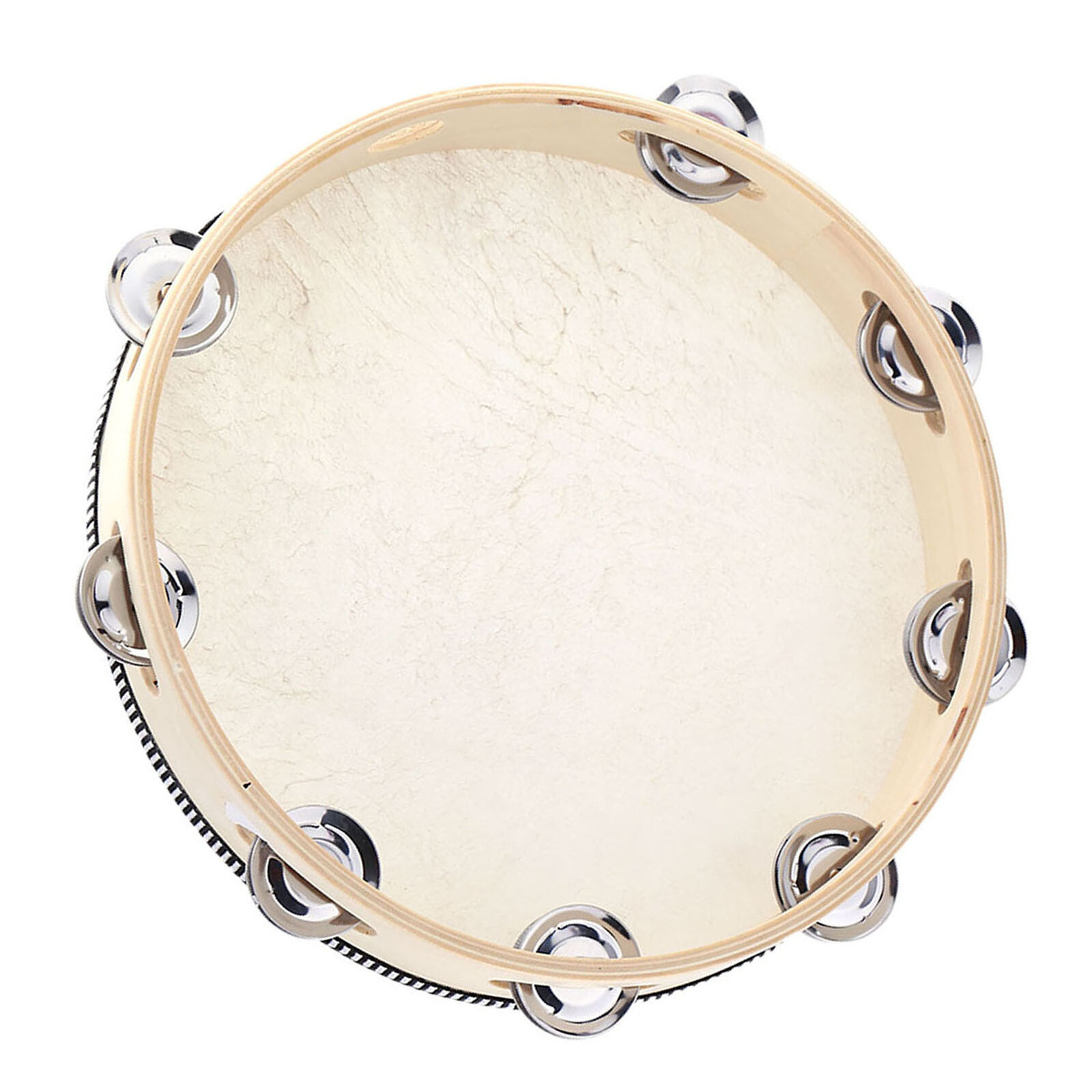 The rhythm track consisted of Paul on piano, John on organ, Ringo on drums and George on tambourine. Most sources cite Ringo as playing the tambourine but, since no overdubs were performed at this session and the tambourine is present on this day's tape as well as the drums, George must have played the tambourine on this guitar-less rhythm track. Fourteen attempts were made at the rhythm track, the final take ("take 14") being deemed the best. The rhythm track consisted of Paul on piano, John on organ, Ringo on drums and George on tambourine. Most sources cite Ringo as playing the tambourine but, since no overdubs were performed at this session and the tambourine is present on this day's tape as well as the drums, George must have played the tambourine on this guitar-less rhythm track. Fourteen attempts were made at the rhythm track, the final take ("take 14") being deemed the best.
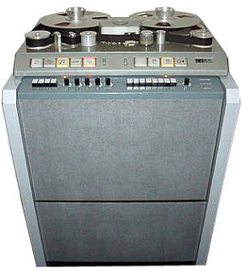 Interestingly, the arrangement was fully decided upon right from the beginning, especially evident by the presence of the reprise ending, nicknamed the “Maori Finale,” even on the first take. Upon listening to this first take, it’s obvious that this “Maori Finale” was worked out ahead of time and not ad-libbed as many writers suggest. Having all four tracks of the tape filled, a tape reduction needed to be made in order to create space for future overdubs, such as all of the vocals. Two attempts were made at creating this tape reduction, “take 16” now considered the recording onto which these overdubs would eventually be made. The session ended at 2:30 am the next morning, having completed the rhythm track on what would be their next chart-topping single. Interestingly, the arrangement was fully decided upon right from the beginning, especially evident by the presence of the reprise ending, nicknamed the “Maori Finale,” even on the first take. Upon listening to this first take, it’s obvious that this “Maori Finale” was worked out ahead of time and not ad-libbed as many writers suggest. Having all four tracks of the tape filled, a tape reduction needed to be made in order to create space for future overdubs, such as all of the vocals. Two attempts were made at creating this tape reduction, “take 16” now considered the recording onto which these overdubs would eventually be made. The session ended at 2:30 am the next morning, having completed the rhythm track on what would be their next chart-topping single.
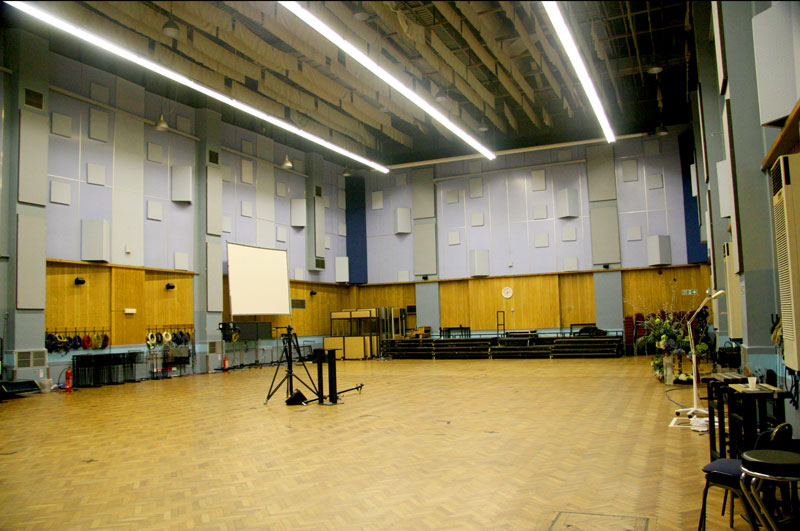 Two and a half weeks later, October 19th, 1967, is when they got around to the overdubbing process onto “take 16” of what was still referred to as “Hello Hello.” At 7 pm or thereafter, the group entered EMI Studio One and began by having George overdub two different lead guitar parts. Paul then proceeded to add his lead vocals, which were treated to reverb in some spots and then double-tracked in other spots. John and George then added their backing vocals, including some hand-clapping along the way. Ringo then added some maracas into the mix while Paul put in a performance on conga drums. John also apparently added some piano work of his own on this day during the “Maori Finale” of the song. After this all was complete, there was a need to make another tape reduction since that new tape was now full. This reduction now brought the song to “take 17.” The session wrapped up this time at 3:30 am the following morning. Two and a half weeks later, October 19th, 1967, is when they got around to the overdubbing process onto “take 16” of what was still referred to as “Hello Hello.” At 7 pm or thereafter, the group entered EMI Studio One and began by having George overdub two different lead guitar parts. Paul then proceeded to add his lead vocals, which were treated to reverb in some spots and then double-tracked in other spots. John and George then added their backing vocals, including some hand-clapping along the way. Ringo then added some maracas into the mix while Paul put in a performance on conga drums. John also apparently added some piano work of his own on this day during the “Maori Finale” of the song. After this all was complete, there was a need to make another tape reduction since that new tape was now full. This reduction now brought the song to “take 17.” The session wrapped up this time at 3:30 am the following morning.
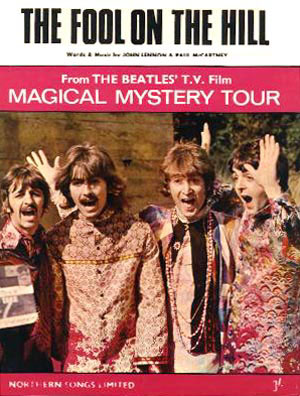 All of these overdubs apparently needed to be complete because session musicians were hired for the following day, October 20th, 1967, for further work on the song. The Beatles met this time in EMI Studio Three at 7 pm or so to oversee this overdub session. First off, three flautists recorded an overdub for the previously recorded song “The Fool On The Hill,” this followed by two viola players, Ken Essex and Leo Birnbaum, who were to record their overdub onto what was still known as “Hello Hello.” All of these overdubs apparently needed to be complete because session musicians were hired for the following day, October 20th, 1967, for further work on the song. The Beatles met this time in EMI Studio Three at 7 pm or so to oversee this overdub session. First off, three flautists recorded an overdub for the previously recorded song “The Fool On The Hill,” this followed by two viola players, Ken Essex and Leo Birnbaum, who were to record their overdub onto what was still known as “Hello Hello.”
 It appears that George Martin had not prepared a score ahead of time for these musicians to play. “Paul McCartney was doodling at the piano,” remembers Leo Birnbaum in the book “The Beatles Recording Sessions,” “and George Martin was sitting next to him writing down what Paul was playing.” And what were the rest of The Beatles doing? Ken Essex recalls, “All of The Beatles were there. One of them was sitting on the floor in what looked like a pajama suit, drawing with crayons on a piece of paper.” The studio musicians were booked from 8 to 11 pm but, since “The Fool On The Hill” needed to be recorded first as well as needing to write out the music these musicians were going to play, their duties weren’t complete until 2:30 am, resulting in them both being paid double-time. Documentation shows that the lights weren’t actually turned off, however, until 3:45 am that early morning. It appears that George Martin had not prepared a score ahead of time for these musicians to play. “Paul McCartney was doodling at the piano,” remembers Leo Birnbaum in the book “The Beatles Recording Sessions,” “and George Martin was sitting next to him writing down what Paul was playing.” And what were the rest of The Beatles doing? Ken Essex recalls, “All of The Beatles were there. One of them was sitting on the floor in what looked like a pajama suit, drawing with crayons on a piece of paper.” The studio musicians were booked from 8 to 11 pm but, since “The Fool On The Hill” needed to be recorded first as well as needing to write out the music these musicians were going to play, their duties weren’t complete until 2:30 am, resulting in them both being paid double-time. Documentation shows that the lights weren’t actually turned off, however, until 3:45 am that early morning.
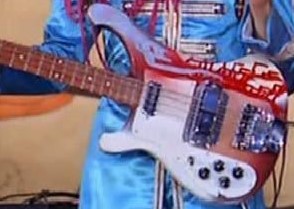 October 25th, 1967, was the day that Paul finally overdubbed his bass guitar on the song. This was done in EMI Studio Two sometime in the later hours of this 7 pm to 3 am session. After mono mixing and editing of “The Fool On The Hill” took place, a third tape reduction needed to be made of what was still entitled “Hello Hello” to free up space for the bass guitar. After three attempts at this tape reduction, Paul took his usual concentration to perfect an appropriate bass guitar performance to what was now “take 21” of “Hello Hello.” October 25th, 1967, was the day that Paul finally overdubbed his bass guitar on the song. This was done in EMI Studio Two sometime in the later hours of this 7 pm to 3 am session. After mono mixing and editing of “The Fool On The Hill” took place, a third tape reduction needed to be made of what was still entitled “Hello Hello” to free up space for the bass guitar. After three attempts at this tape reduction, Paul took his usual concentration to perfect an appropriate bass guitar performance to what was now “take 21” of “Hello Hello.”
 Then, on November 1st, 1967, a fourth tape reduction was made for the song, undoubtedly because Paul wanted to add yet another overdub and the tape was once again full. This being the fourth tape reduction, it needed to be done with great care because of the possibility of an excessive amount of hiss and/or background noise being left on the tape. Four attempts were made, numbered ‘takes 22 through 25,’ the first try being the best. This masterful job was performed by George Martin and engineers Geoff Emerick and Graham Kirkby in the control room of EMI Studio Three sometime between 2:30 and 6 pm on this day. The song’s title, by the way, was finally changed to “Hello Goodbye” at this point. Then, on November 1st, 1967, a fourth tape reduction was made for the song, undoubtedly because Paul wanted to add yet another overdub and the tape was once again full. This being the fourth tape reduction, it needed to be done with great care because of the possibility of an excessive amount of hiss and/or background noise being left on the tape. Four attempts were made, numbered ‘takes 22 through 25,’ the first try being the best. This masterful job was performed by George Martin and engineers Geoff Emerick and Graham Kirkby in the control room of EMI Studio Three sometime between 2:30 and 6 pm on this day. The song’s title, by the way, was finally changed to “Hello Goodbye” at this point.
 The next day, November 2nd, 1967, Paul recorded that final overdub in EMI Studio Three in a session that ran from 2:30 to 6 pm. The final overdub was a second bass guitar part. With this complete, the recording staff of George Martin, Geoff Emerick and 2nd engineer Jeff Jarratt (no doubt with Paul’s input) created the mono mix which made it to release around the world. Six attempts were made from the final “take 22,” the sixth mono mix being deemed “best.” The next day, November 2nd, 1967, Paul recorded that final overdub in EMI Studio Three in a session that ran from 2:30 to 6 pm. The final overdub was a second bass guitar part. With this complete, the recording staff of George Martin, Geoff Emerick and 2nd engineer Jeff Jarratt (no doubt with Paul’s input) created the mono mix which made it to release around the world. Six attempts were made from the final “take 22,” the sixth mono mix being deemed “best.”
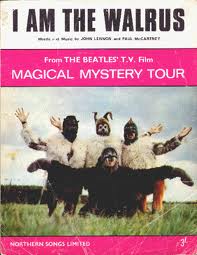 The stereo mix was created on November 6th, 1967 in the control room of EMI Studio Three by the team of George Martin, Geoff Emerick and 2nd engineer Ken Scott. It only took two attempts, the second one doing the trick. They then went on to create stereo mixes for previously recorded “Magical Mystery Tour” songs, “I Am The Walrus” being a much more complicated task! The stereo mix was created on November 6th, 1967 in the control room of EMI Studio Three by the team of George Martin, Geoff Emerick and 2nd engineer Ken Scott. It only took two attempts, the second one doing the trick. They then went on to create stereo mixes for previously recorded “Magical Mystery Tour” songs, “I Am The Walrus” being a much more complicated task!
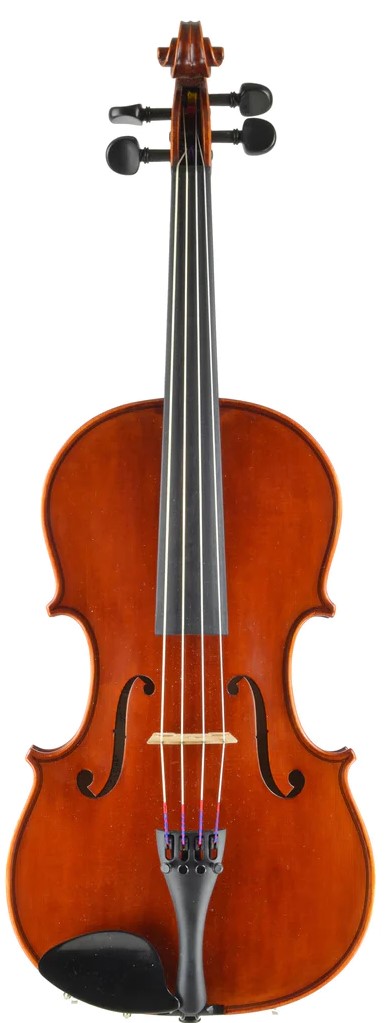 One final mono mix of “Hello Goodbye” was made on November 15th, 1967, but not for the purpose of release on record. The group had filmed three promotional clips for the song for distribution to various television shows and it was deemed necessary to dub in a new mix of the song onto these clips without the violas. The book “The Beatles Recording Sessions” explains: “It was later realized that, in Britain, these (films) might contravene the Musicians’ Union ban on miming. Since the viola players were not shown in the films – making the miming transparently obvious – this remix was made and dubbed onto the BBC’s copy. It was a wasted task however, for The Beatles’ own miming could not be masked and consequently the film was not show in the UK.” One final mono mix of “Hello Goodbye” was made on November 15th, 1967, but not for the purpose of release on record. The group had filmed three promotional clips for the song for distribution to various television shows and it was deemed necessary to dub in a new mix of the song onto these clips without the violas. The book “The Beatles Recording Sessions” explains: “It was later realized that, in Britain, these (films) might contravene the Musicians’ Union ban on miming. Since the viola players were not shown in the films – making the miming transparently obvious – this remix was made and dubbed onto the BBC’s copy. It was a wasted task however, for The Beatles’ own miming could not be masked and consequently the film was not show in the UK.”
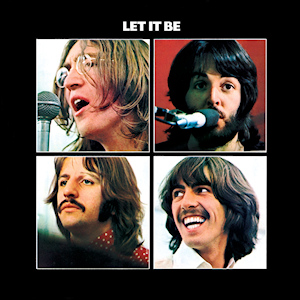 During the January 1969 rehearsals at Apple Studios for what became the "Let It Be" album and film, "Hello Goodbye" came up in a couple of different ways. First, on January 24th, they touched on the song in between practicing many newer compositions, such as putting in a good amount of effort constructing the acoustic arrangement for the song "Two Of Us." Then, on January 31st, John so liked the “Maori Finale” of “Hello Goodbye” that he decided to whistle the “Hayla, Heba Helloah” melody line during the similarly reprised ending of “Two Of Us.” This can easily be heard on both the released recording and the “Let It Be” movie. During the January 1969 rehearsals at Apple Studios for what became the "Let It Be" album and film, "Hello Goodbye" came up in a couple of different ways. First, on January 24th, they touched on the song in between practicing many newer compositions, such as putting in a good amount of effort constructing the acoustic arrangement for the song "Two Of Us." Then, on January 31st, John so liked the “Maori Finale” of “Hello Goodbye” that he decided to whistle the “Hayla, Heba Helloah” melody line during the similarly reprised ending of “Two Of Us.” This can easily be heard on both the released recording and the “Let It Be” movie.
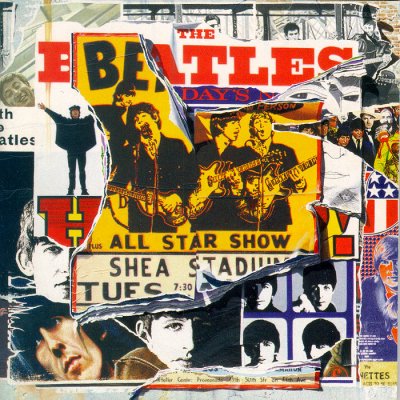 Sometime in 1995, the song was returned to by George Martin and Geoff Emerick in order to create an interesting version of the song for release on the album “Anthology 2.” While no overdubbed bass parts are heard in this version, guitar parts played by George which were left out of the final mix, including a sour note here and there, were included. Sometime in 1995, the song was returned to by George Martin and Geoff Emerick in order to create an interesting version of the song for release on the album “Anthology 2.” While no overdubbed bass parts are heard in this version, guitar parts played by George which were left out of the final mix, including a sour note here and there, were included.
Sometime between April 1st and May 18th, 2002, Paul McCartney and his band recorded a live performance of the song which was released on the American album “Back In The US” as well as (for the rest of the world) the album “Back In The World.”
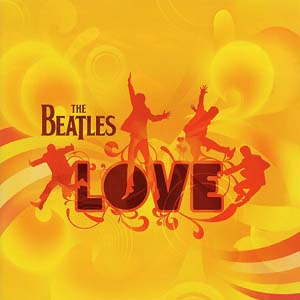 Then, sometime in 2005, George Martin and his son Giles Martin included the “Maori Finale” of the song in their newly created mix of “Strawberry Fields Forever” as included in the 2006 released album “Love." Giles Martin returned to the song again in 2015 with Sam Okell in Abbey Road Studios to create a new stereo mix for inclusion on the re-release of the compilation album "Beatles 1.” Then, sometime in 2005, George Martin and his son Giles Martin included the “Maori Finale” of the song in their newly created mix of “Strawberry Fields Forever” as included in the 2006 released album “Love." Giles Martin returned to the song again in 2015 with Sam Okell in Abbey Road Studios to create a new stereo mix for inclusion on the re-release of the compilation album "Beatles 1.”
Song Structure and Style
Beatles associate Pete Shotton relates: “Our old Liverpool friend, Bill Turner, happened to drop by 94 Baker Street on the afternoon that Paul breezed into the offices to play us the acetate of The Beatles’ new single, ‘Hello Goodbye.’ As soon as the song was over, all the employees gushed forth with superlatives like, ‘Wonderful!’ ‘Lovely!’ and, ‘Ooh, Paul. It’s so fantastic!’ Noticing that Bill had failed to join in this chorus, Paul demanded, ‘Well, what did you think, William?’ ‘Well, to be honest with you,’ Bill said, ‘I thought it was a bit repetitious, really, and not one of your best records.’ Paul was visibly taken aback. Whatever the merits of ‘Hello Goodbye,’ it was clear that none of Paul’s friends or associates had dared to speak to him like that in years.”
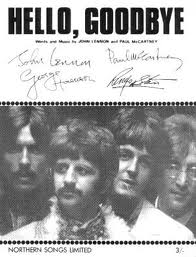 Bill Turner’s estimation of “Hello Goodbye” as being “a bit repetitious” may appear warranted, but upon critical inspection, there is a lot to assimilate here, especially in regards to the arrangement and production. The song may be comprised of a quite simple structure, namely ‘verse/ refrain/ verse/ refrain/ verse (instrumental)/ refrain/ verse/ refrain/ outro 1/ outro 2’ (or ababababcd), but Paul, George Martin and the rest of the boys add in enough goodies to provide a cornucopia of sounds for the listener's enjoyment. Bill Turner’s estimation of “Hello Goodbye” as being “a bit repetitious” may appear warranted, but upon critical inspection, there is a lot to assimilate here, especially in regards to the arrangement and production. The song may be comprised of a quite simple structure, namely ‘verse/ refrain/ verse/ refrain/ verse (instrumental)/ refrain/ verse/ refrain/ outro 1/ outro 2’ (or ababababcd), but Paul, George Martin and the rest of the boys add in enough goodies to provide a cornucopia of sounds for the listener's enjoyment.
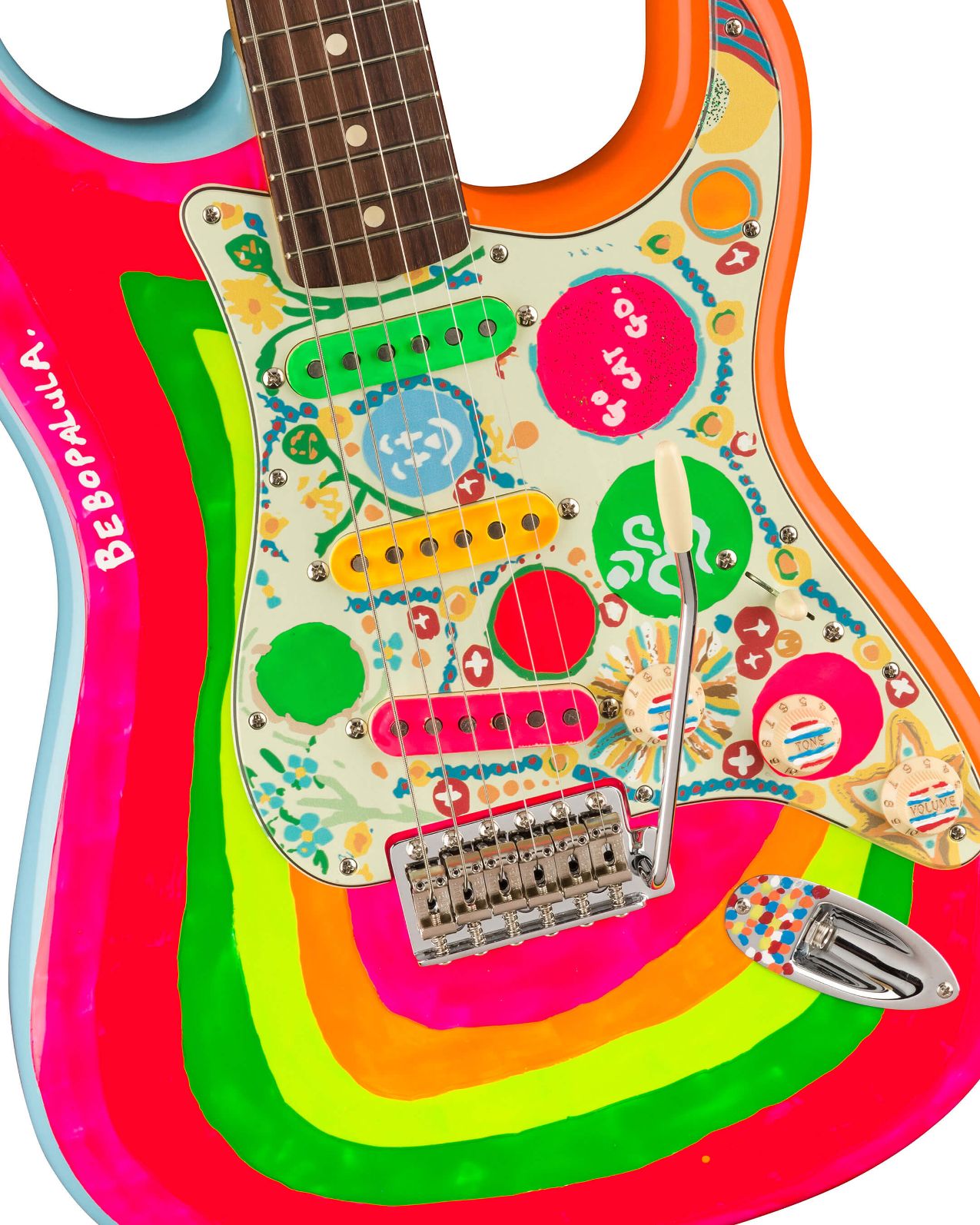 The first verse is seventeen measures long, as are all of the verses, and begins straightaway on the downbeat without any need of an introduction. Paul’s double-tracked lead vocals are front and center as are the violas which play a harmony to Paul’s melody line. Paul’s piano from the rhythm track thumps away to propel the beat of the song along with simple cymbal crashes on the downbeats of every other measure while the overdubbed maracas and bass guitar round out the first eight measures. The bass plays a downward run in the seventh and eighth measures to bring in the full drum kit which starts in the ninth measure. George’s guitar is discerned first in the tenth measure with its downward sliding lick, while the bass and drums cut out in the fifteenth through seventeenth measures to highlight the segue into the refrain with the lyrics “You say goodbye, while I say hello.” The first verse is seventeen measures long, as are all of the verses, and begins straightaway on the downbeat without any need of an introduction. Paul’s double-tracked lead vocals are front and center as are the violas which play a harmony to Paul’s melody line. Paul’s piano from the rhythm track thumps away to propel the beat of the song along with simple cymbal crashes on the downbeats of every other measure while the overdubbed maracas and bass guitar round out the first eight measures. The bass plays a downward run in the seventh and eighth measures to bring in the full drum kit which starts in the ninth measure. George’s guitar is discerned first in the tenth measure with its downward sliding lick, while the bass and drums cut out in the fifteenth through seventeenth measures to highlight the segue into the refrain with the lyrics “You say goodbye, while I say hello.”
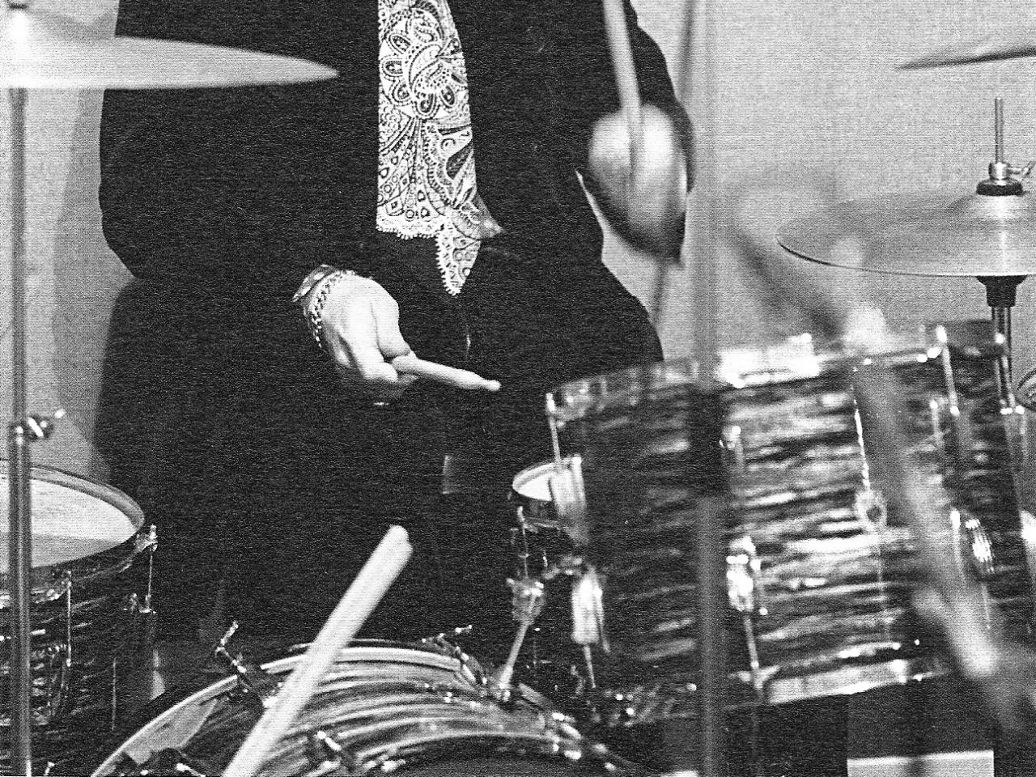 The refrain is fourteen measures long and features various distinctive features in contrast with the verse that it follows. George’s distorted lead guitar lines ascend up the scales repeatedly except for the final line in the twelfth verse which descends into a bluesy run. John’s organ can be quietly heard for the first time in this refrain while Ringo purposely omits the use of cymbals and focuses the simple beat on his toms. The maracas add the little treble necessary to fill out the highs in this section as Paul’s double-tracked lead vocals are still in the forefront without any need of background vocals. The refrain is fourteen measures long and features various distinctive features in contrast with the verse that it follows. George’s distorted lead guitar lines ascend up the scales repeatedly except for the final line in the twelfth verse which descends into a bluesy run. John’s organ can be quietly heard for the first time in this refrain while Ringo purposely omits the use of cymbals and focuses the simple beat on his toms. The maracas add the little treble necessary to fill out the highs in this section as Paul’s double-tracked lead vocals are still in the forefront without any need of background vocals.
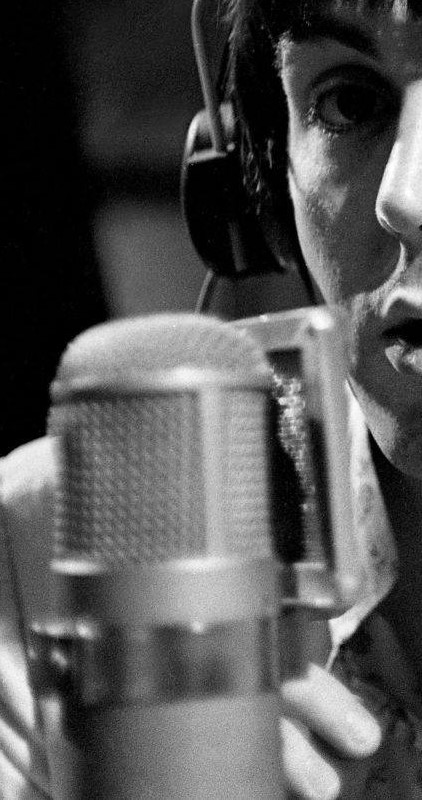 Next comes the second verse, which contains a few arrangement differences from the first verse. The violas play an answering melody line to Paul’s vocals in the first six measures and then play the descending riff that Paul played on the bass in the first verse during the seventh and eighth measures. The fifteenth through seventeenth measures feature some cymbal accents from Ringo to go along with the prominent percussion heard there. Next comes the second verse, which contains a few arrangement differences from the first verse. The violas play an answering melody line to Paul’s vocals in the first six measures and then play the descending riff that Paul played on the bass in the first verse during the seventh and eighth measures. The fifteenth through seventeenth measures feature some cymbal accents from Ringo to go along with the prominent percussion heard there.
The second refrain is then heard, which features background harmonies from John and George singing the ascending and descending guitar runs that George played during the last refrain, repeating the title of the song over and over to fill out the notes. The instrumentation on this refrain is similar to the first except for the absence of the lead guitar and the addition of a couple of handclaps in the last measure.
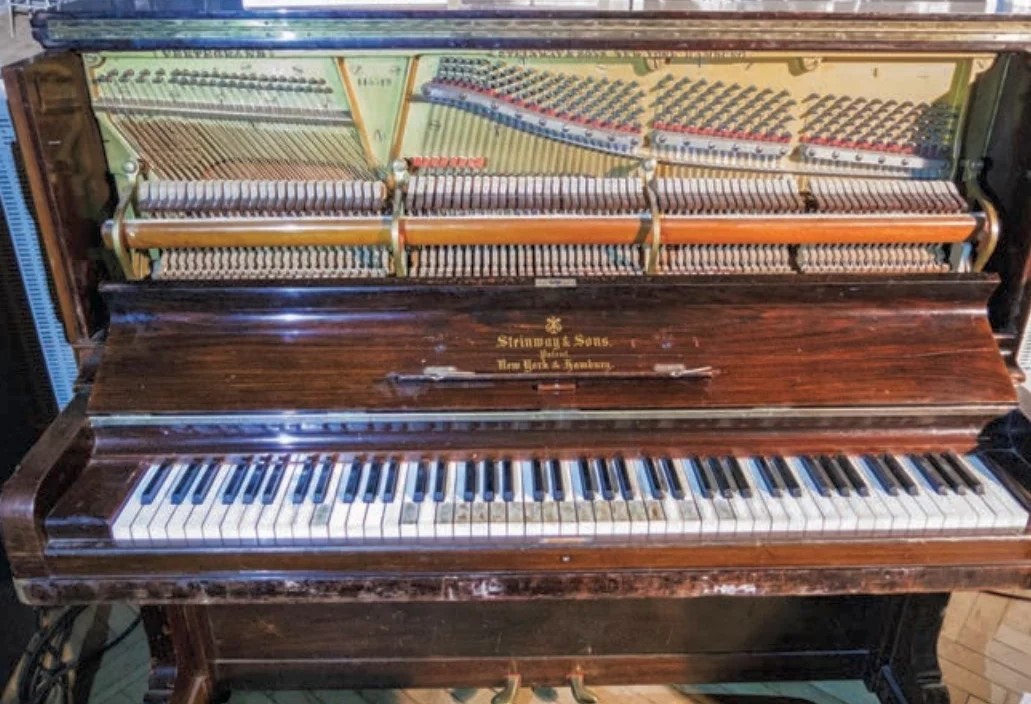 The third verse is, for all intents and purposes, an instrumental verse with the violas playing a winding and jumping melody line as fleshed out by Paul on the piano that day, while Ringo plods away with some impressive drum fills which comprise the first eight measures. Starting with the fourth measure, Paul can’t resist adding some highly reverberated vocal gymnastics into the mix. Ringo, who’s then on a roll, adds some nice drum fills to the final three measures this time instead of just sitting back as he did in the previous verses. A third refrain is then heard which is mostly identical to the first refrain instrumentally, right down to the return of George’s distorted lead guitar lines. The third verse is, for all intents and purposes, an instrumental verse with the violas playing a winding and jumping melody line as fleshed out by Paul on the piano that day, while Ringo plods away with some impressive drum fills which comprise the first eight measures. Starting with the fourth measure, Paul can’t resist adding some highly reverberated vocal gymnastics into the mix. Ringo, who’s then on a roll, adds some nice drum fills to the final three measures this time instead of just sitting back as he did in the previous verses. A third refrain is then heard which is mostly identical to the first refrain instrumentally, right down to the return of George’s distorted lead guitar lines.
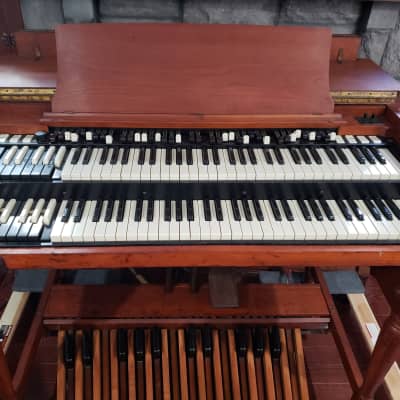 The fourth verse is then heard which is lyrically a repeat of the first verse. However, the arrangement and instrumentation are drastically different than those of the first verse. John’s pulsing Hammond B-3 organ is now high up in the mix while Ringo throws in some more drum fills in the first eight measures. John and George’s background vocals kick in again, but this time in an answering fashion to Paul’s lyrics. “I say yes, but I mean no…I can stay until it’s time to go,” they insist. The violas come in with a up-and-down melody line in the ninth and tenth measures and then drone in a single quarter-note pattern in the thirteenth and fourteenth measures. The violas then hold out a single note in the fifteenth through seventeenth measures while Ringo once again adds a nice drum fill to lead into the final refrain that follows. The fourth verse is then heard which is lyrically a repeat of the first verse. However, the arrangement and instrumentation are drastically different than those of the first verse. John’s pulsing Hammond B-3 organ is now high up in the mix while Ringo throws in some more drum fills in the first eight measures. John and George’s background vocals kick in again, but this time in an answering fashion to Paul’s lyrics. “I say yes, but I mean no…I can stay until it’s time to go,” they insist. The violas come in with a up-and-down melody line in the ninth and tenth measures and then drone in a single quarter-note pattern in the thirteenth and fourteenth measures. The violas then hold out a single note in the fifteenth through seventeenth measures while Ringo once again adds a nice drum fill to lead into the final refrain that follows.
This fourth refrain starts out similar to the first and third refrains but then, starting from the seventh measure, John’s organ is added prominently holding out chords as a nice filler. The refrain is only twelve measures long this time around, which is immediately followed by what we call here “outro 1,” which turns out to be fourteen measures long. The first six measures of this section is a repeat of the first six measures of the refrain, but then it segues directly into a descending chord pattern to what appears to be the ending of the song. Paul’s slowed down notes during his last “hello-o-o” gives the impression that we’ve heard all there is to hear. But that is not the case at all!
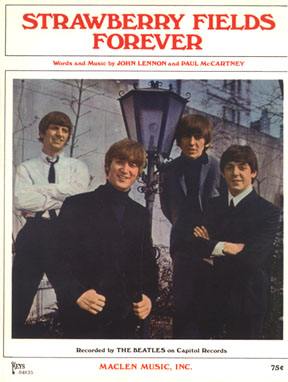 “The best bit was at the end,” John recalled in 1980, “where I played the piano. Like 'Ticket To Ride,' where we just threw something in at the end." The Beatles were very keen on trick endings during the final years of their career, “Strawberry Fields Forever,” “Helter Skelter,” “Sgt. Pepper’s Inner Groove” and “Her Majesty” being prime examples. However, this practice did not become redundant because of their imaginative way of creating the unexpected. “The best bit was at the end,” John recalled in 1980, “where I played the piano. Like 'Ticket To Ride,' where we just threw something in at the end." The Beatles were very keen on trick endings during the final years of their career, “Strawberry Fields Forever,” “Helter Skelter,” “Sgt. Pepper’s Inner Groove” and “Her Majesty” being prime examples. However, this practice did not become redundant because of their imaginative way of creating the unexpected.
 “Outro 2,” or the “Maori Finale,” as they called it, spanned thirty-four measures and consisted of Paul, John and George harmonizing “Hayla, Heba Helloah” over and over with all Beatles instrumentation to the fore, including a see-sawing lead guitar line from George. Paul adds vocal accents like “Cha, cha, cha” and “whooahhh” while the tambourine, maracas, conga drums and extra piano are punched up in the mix until it all fades into the sunset. “Outro 2,” or the “Maori Finale,” as they called it, spanned thirty-four measures and consisted of Paul, John and George harmonizing “Hayla, Heba Helloah” over and over with all Beatles instrumentation to the fore, including a see-sawing lead guitar line from George. Paul adds vocal accents like “Cha, cha, cha” and “whooahhh” while the tambourine, maracas, conga drums and extra piano are punched up in the mix until it all fades into the sunset.
 This being Paul’s baby, his vocal work is top-notch as is his bass and piano playing (not to mention conga drums). Ringo’s drum work is dutifully carried out, giving the impression that he very much enjoyed this track. The entirety of George’s guitar work did not make the final mix, but his presence is definitely felt, not to mention his enthusiastic background vocal delivery and tambourine playing. John’s main instrument is keyboards on this song, organ during the main section and piano in the final section. His distinctive background vocals are a characteristic of the song which adds to The Beatles camaraderie felt by the listener. This being Paul’s baby, his vocal work is top-notch as is his bass and piano playing (not to mention conga drums). Ringo’s drum work is dutifully carried out, giving the impression that he very much enjoyed this track. The entirety of George’s guitar work did not make the final mix, but his presence is definitely felt, not to mention his enthusiastic background vocal delivery and tambourine playing. John’s main instrument is keyboards on this song, organ during the main section and piano in the final section. His distinctive background vocals are a characteristic of the song which adds to The Beatles camaraderie felt by the listener.
American Releases
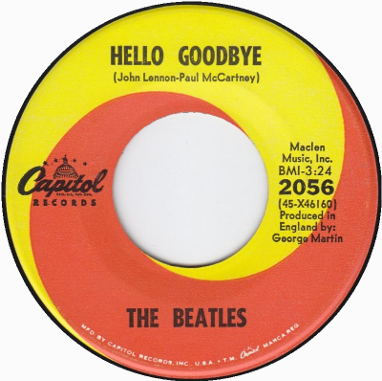 “Hello Goodbye” was first released in America as a single on November 27th, 1967. Referring to his song “I Am The Walrus,” John once incredulously stated, “It was the b-side to ‘Hello, Goodbye.’ Can you believe it?” Three weeks at #1 on the US Billboard Hot 100 showed that the more commercial side of the single was chosen after all, while “Walrus” only managed to chart at #56. “Hello Goodbye” was first released in America as a single on November 27th, 1967. Referring to his song “I Am The Walrus,” John once incredulously stated, “It was the b-side to ‘Hello, Goodbye.’ Can you believe it?” Three weeks at #1 on the US Billboard Hot 100 showed that the more commercial side of the single was chosen after all, while “Walrus” only managed to chart at #56.
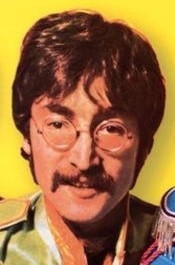 In his book "The Lyrics," Paul writes: "With regard to John Lennon and myself, the great attraction we had for each other was that we each had a bit the other didn't have. John could be quite cynical. I was his opposite in that respect. So for the single release, on the a-side, we had 'Hello Goodbye,' one of my songs where I'm trying to see the positive side. On the b-side we had John's song 'I Am The Walrus,' a lyric full of uncertainties. And that opposite worked well creatively, but also commercially...I think there definitely was a sort of 'hello, goodbye' about John and myself. But we loved it. We loved it because John could contribute his caustic wit and I could contribute something more upbeat...there was a binary tension at the heart of our songwriting together." In his book "The Lyrics," Paul writes: "With regard to John Lennon and myself, the great attraction we had for each other was that we each had a bit the other didn't have. John could be quite cynical. I was his opposite in that respect. So for the single release, on the a-side, we had 'Hello Goodbye,' one of my songs where I'm trying to see the positive side. On the b-side we had John's song 'I Am The Walrus,' a lyric full of uncertainties. And that opposite worked well creatively, but also commercially...I think there definitely was a sort of 'hello, goodbye' about John and myself. But we loved it. We loved it because John could contribute his caustic wit and I could contribute something more upbeat...there was a binary tension at the heart of our songwriting together."
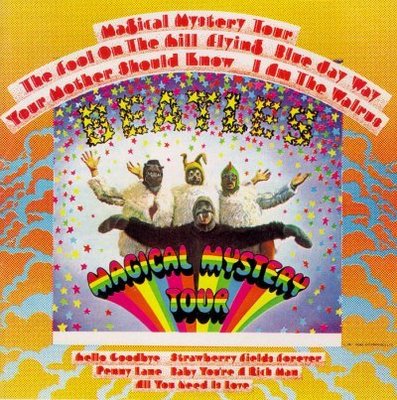 Also on November 27th, 1967, the album “Magical Mystery Tour” was released in the US. Although the songs from the “MMT” film were only released as an EP set in Britain, Capitol Records knew that EP sales in the US were negligible and therefore created a full album by including the other 1967 single releases by the group on side two. Capitol placed “Hello Goodbye” as the opening track of side two on this makeshift album, highlighting the newly released single. The album sold over six million copies, this song being one of many highlights. The vinyl version of this album continued to be reissued in the US throughout the years, while it was first released on compact disc on September 21st, 1987 and then in a newly remastered condition on September 9th, 2009. Also on November 27th, 1967, the album “Magical Mystery Tour” was released in the US. Although the songs from the “MMT” film were only released as an EP set in Britain, Capitol Records knew that EP sales in the US were negligible and therefore created a full album by including the other 1967 single releases by the group on side two. Capitol placed “Hello Goodbye” as the opening track of side two on this makeshift album, highlighting the newly released single. The album sold over six million copies, this song being one of many highlights. The vinyl version of this album continued to be reissued in the US throughout the years, while it was first released on compact disc on September 21st, 1987 and then in a newly remastered condition on September 9th, 2009.
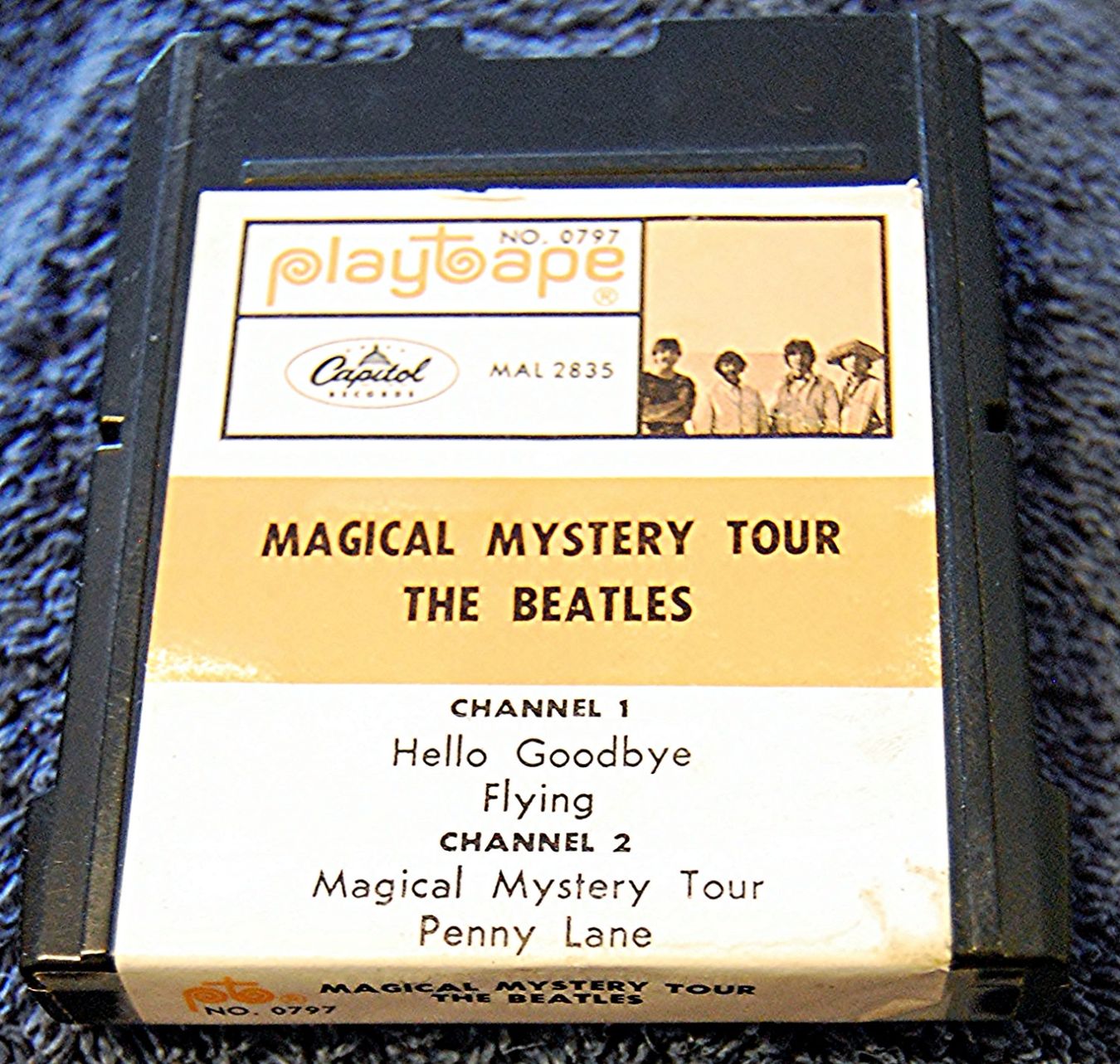 Sometime in 1967, Capitol released Beatles music on a brand new but short-lived format called "Playtapes." These tape cartridges did not have the capability to include entire albums, so a truncated four-song version of "Magical Mystery Tour" was released in early 1968 in this portable format, some rare copies having a picture from the "Help!" soundtrack album on the front of the tape. "Hello Goodbye" was one of the four songs on this release. These "Playtapes" are highly collectable today. Sometime in 1967, Capitol released Beatles music on a brand new but short-lived format called "Playtapes." These tape cartridges did not have the capability to include entire albums, so a truncated four-song version of "Magical Mystery Tour" was released in early 1968 in this portable format, some rare copies having a picture from the "Help!" soundtrack album on the front of the tape. "Hello Goodbye" was one of the four songs on this release. These "Playtapes" are highly collectable today.
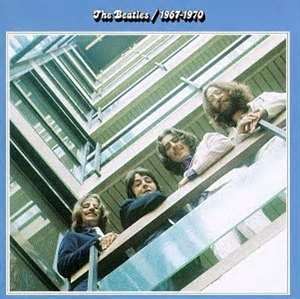 Understandably, “Hello Goodbye” earned a spot on the April 2nd, 1973, released compilation set “The Beatles/1967-1970” (aka “The Blue Album”). This album was released on compact disc for the first time on September 20th, 1993, "Hello Goodbye" also appearing on a composite "Red Album / Blue Album" promotional sampler that was released at the same time. The "Blue Album" was then remastered and re-released on August 10th, 2010. Understandably, “Hello Goodbye” earned a spot on the April 2nd, 1973, released compilation set “The Beatles/1967-1970” (aka “The Blue Album”). This album was released on compact disc for the first time on September 20th, 1993, "Hello Goodbye" also appearing on a composite "Red Album / Blue Album" promotional sampler that was released at the same time. The "Blue Album" was then remastered and re-released on August 10th, 2010.
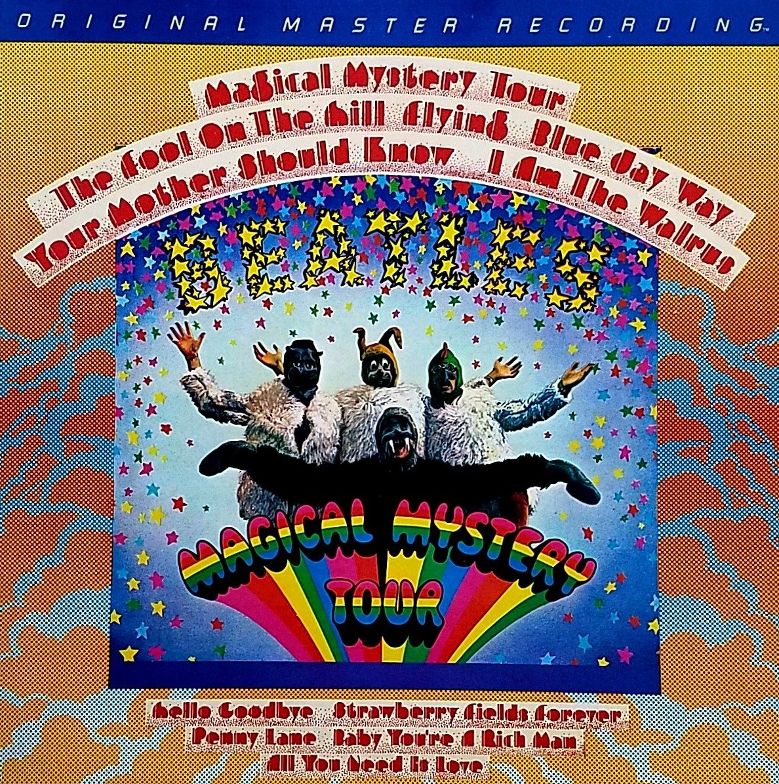 An interesting US vinyl edition of the “Magical Mystery Tour” album was released on February 1st, 1981. This was manufactured by Mobile Fidelity Sound Lab in Chatsworth, California and was part of their "Original Master Recording" series, which prepared its albums utilizing half-speed mastering technology from the original master tapes. In this case, however, they leased the master tape from EMI in the UK, not realizing that this was a second generation master tape originally supplied by Capitol Records in America. While this release sounded superior to conventional vinyl versions, it still contained the duophonic (fake stereo) mixes of “Penny Lane,” “Baby, You're A Rich Man” and “All You Need Is Love.” Also, as was the case with all of the vinyl editions of the album by this time, the original multi-page booklet was omitted from this new vinyl release. Nevertheless, this edition of the album was only available for a short time and is quite collectible today. An interesting US vinyl edition of the “Magical Mystery Tour” album was released on February 1st, 1981. This was manufactured by Mobile Fidelity Sound Lab in Chatsworth, California and was part of their "Original Master Recording" series, which prepared its albums utilizing half-speed mastering technology from the original master tapes. In this case, however, they leased the master tape from EMI in the UK, not realizing that this was a second generation master tape originally supplied by Capitol Records in America. While this release sounded superior to conventional vinyl versions, it still contained the duophonic (fake stereo) mixes of “Penny Lane,” “Baby, You're A Rich Man” and “All You Need Is Love.” Also, as was the case with all of the vinyl editions of the album by this time, the original multi-page booklet was omitted from this new vinyl release. Nevertheless, this edition of the album was only available for a short time and is quite collectible today.
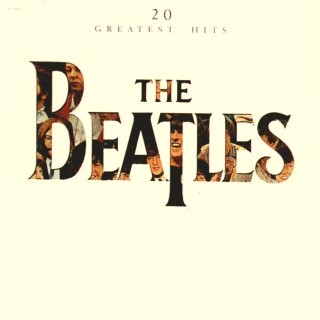 October 11th, 1982 saw the release of a more condensed “best of” package entitled “20 Greatest Hits.” “Hello Goodbye” was featured here, the album only peaking at #50 on Billboard during this MTV dominated time. October 11th, 1982 saw the release of a more condensed “best of” package entitled “20 Greatest Hits.” “Hello Goodbye” was featured here, the album only peaking at #50 on Billboard during this MTV dominated time.
On March 18th, 1996, the album “Anthology 2” was released which featured the interesting composite version of the song mentioned above, the primary feature being George’s guitar parts that didn’t make the final cut of the song.
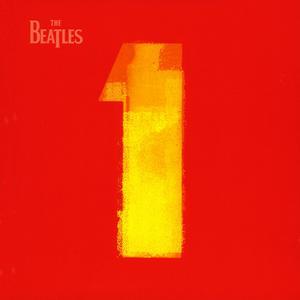 The extremely popular compilation album “Beatles 1” also featured “Hello Goodbye,” this single CD package first released on November 13th, 2000. Not only did the album reach the #1 position on the US Billboard chart, it was certified as the best selling album of that decade and continues to be the biggest selling Beatles album of all time. A remastered version of this album was released in September of 2011 and a newly mixed version was released on November 6th, 2015. The extremely popular compilation album “Beatles 1” also featured “Hello Goodbye,” this single CD package first released on November 13th, 2000. Not only did the album reach the #1 position on the US Billboard chart, it was certified as the best selling album of that decade and continues to be the biggest selling Beatles album of all time. A remastered version of this album was released in September of 2011 and a newly mixed version was released on November 6th, 2015.
 On November 20th, 2006, the album “Love” was released, which features elements of “Hello Goodbye” on the track “Strawberry Fields Forever” as mentioned above. This album peaked at #4 on the Billboard album chart. On November 20th, 2006, the album “Love” was released, which features elements of “Hello Goodbye” on the track “Strawberry Fields Forever” as mentioned above. This album peaked at #4 on the Billboard album chart.
On September 9th, 2009, the CD box set “The Beatles In Mono” was released, which contained the entire mono Beatles catalog in a newly remastered condition, “Hello Goodbye” being among the collection. The vinyl edition of this box set was first released on September 9th, 2014.
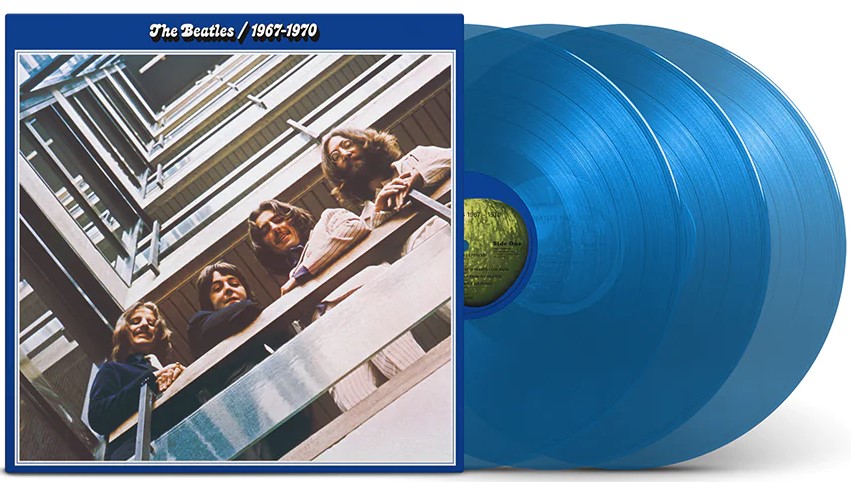 A 50th Anniversay edition of the compilation album "The Beatles / 1967 - 1970" (aka "The Blue Album") was released on November 10th, 2023, the Giles Martin stereo mix of "Hello Goodbye" as detailed above, being included. This expanded release included 12 additional songs for a total of 38 tracks, and was made available as a double CD and as a triple vinyl release on both black and blue vinyl. A 50th Anniversay edition of the compilation album "The Beatles / 1967 - 1970" (aka "The Blue Album") was released on November 10th, 2023, the Giles Martin stereo mix of "Hello Goodbye" as detailed above, being included. This expanded release included 12 additional songs for a total of 38 tracks, and was made available as a double CD and as a triple vinyl release on both black and blue vinyl.
Paul McCartney’s live album “Back In The US” also featured a live version of the song, this album being released on November 11th, 2002.
Live Performances
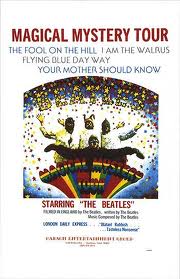 The filming of the television program “Magical Mystery Tour” was complete on November 3rd, 1967 but a week later, on November 10th, they still had the filming bug and created a colorful and imaginative video sequence to promote their latest single “Hello Goodbye.” As was the case for “MMT,” Paul took the lead in putting this promo together. The filming of the television program “Magical Mystery Tour” was complete on November 3rd, 1967 but a week later, on November 10th, they still had the filming bug and created a colorful and imaginative video sequence to promote their latest single “Hello Goodbye.” As was the case for “MMT,” Paul took the lead in putting this promo together.
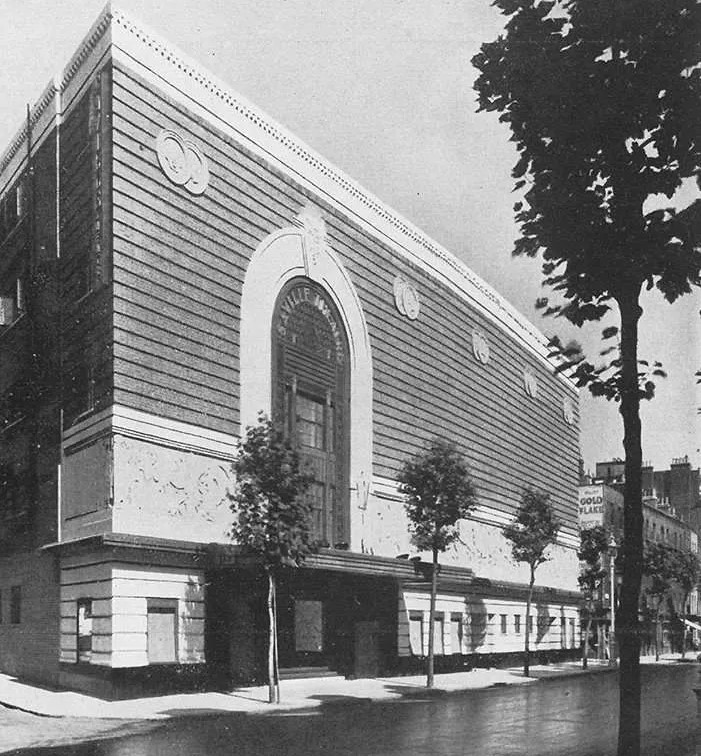 “I directed the promo film we made for ‘Hello, Goodbye,’” Paul relates in the book “Beatles Anthology.” “Directing a film is something that everyone always wants to get into. It was something I’d always been interested in until I actually tried it. Then I realized it was too much like hard work. Someone summed it up when they said: ‘There’s always someone arriving saying: “Do you want the gold pistols or the silver pistols?”’ Then you think: ‘Um, um…’ There was so much of that going on – so many decisions to be made – that I ended up hating it. I didn’t really direct the film – all we needed was a couple of cameras, some good cameramen, a bit of sound and some dancing girls. I thought, ‘We’ll just hire a theater and show up there one afternoon.’ And that’s what we did: we took our ‘Sgt. Pepper’ suits along and filmed at the Saville Theater in the West End.” “I directed the promo film we made for ‘Hello, Goodbye,’” Paul relates in the book “Beatles Anthology.” “Directing a film is something that everyone always wants to get into. It was something I’d always been interested in until I actually tried it. Then I realized it was too much like hard work. Someone summed it up when they said: ‘There’s always someone arriving saying: “Do you want the gold pistols or the silver pistols?”’ Then you think: ‘Um, um…’ There was so much of that going on – so many decisions to be made – that I ended up hating it. I didn’t really direct the film – all we needed was a couple of cameras, some good cameramen, a bit of sound and some dancing girls. I thought, ‘We’ll just hire a theater and show up there one afternoon.’ And that’s what we did: we took our ‘Sgt. Pepper’ suits along and filmed at the Saville Theater in the West End.”
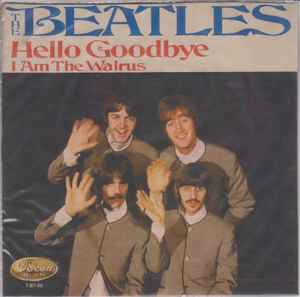 Three color 35mm film clips were made on this day at the Saville Theater, which was still leased by NEMS Enterprises after the recent death of manager Brian Epstein. The book “The Beatles Chronicle” describes the details of the work done on this day “with different costumes, antics and backcloths to distinguish one from another. In clip number one…The Beatles wore their ‘Sgt. Pepper’ uniforms, Paul playing electric bass guitar, George playing electric lead guitar, John (not wearing his glasses) an acoustic guitar, and Ringo playing the drums…This was filmed in front of what could be called a ‘Psychedelic’ backcloth. This clip also contained cutaways to all four Beatles wearing their 1963 collarless suits and waving to the camera, and featured a number of local dancing girls dressed Hawaii-style (grass skirts, flower-garlands) who came on to jig around The Beatles and jollify the ‘Maori Finale’ section.” Three color 35mm film clips were made on this day at the Saville Theater, which was still leased by NEMS Enterprises after the recent death of manager Brian Epstein. The book “The Beatles Chronicle” describes the details of the work done on this day “with different costumes, antics and backcloths to distinguish one from another. In clip number one…The Beatles wore their ‘Sgt. Pepper’ uniforms, Paul playing electric bass guitar, George playing electric lead guitar, John (not wearing his glasses) an acoustic guitar, and Ringo playing the drums…This was filmed in front of what could be called a ‘Psychedelic’ backcloth. This clip also contained cutaways to all four Beatles wearing their 1963 collarless suits and waving to the camera, and featured a number of local dancing girls dressed Hawaii-style (grass skirts, flower-garlands) who came on to jig around The Beatles and jollify the ‘Maori Finale’ section.”
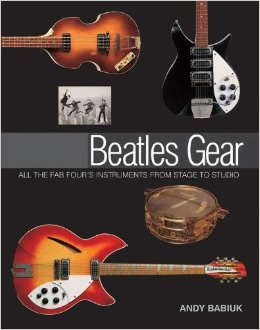 An interesting feature of this first clip is the extremely small drum set Ringo was playing. “Starr used a small child-size kit in white pearl finish for this first clip,” states Andy Babiuk’s book “Beatles Gear.” “Gerry Evans, then manager of London’s Drum City store, was asked to supply the tiny kit for the filming, and his recollection recently was that it may have been a Trixon-brand outfit.” An interesting feature of this first clip is the extremely small drum set Ringo was playing. “Starr used a small child-size kit in white pearl finish for this first clip,” states Andy Babiuk’s book “Beatles Gear.” “Gerry Evans, then manager of London’s Drum City store, was asked to supply the tiny kit for the filming, and his recollection recently was that it may have been a Trixon-brand outfit.”
“In the second clip,” continues the book “The Beatles Chronicle,” “with the same instrumental line-up…the group were filmed wearing their everyday clothes, performing in front of a pastoral backcloth. Again, the Hawaiin-style dancers came on for the coda.” Ringo is now seen with his standard regular size Ludwig drums with the “Beatles” logo on the bass drum head.
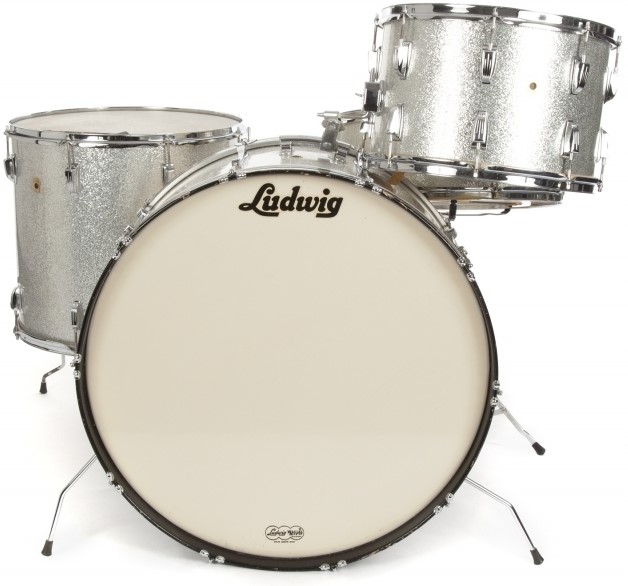 As for the third clip, “The Beatles Chronicle” describes it as “a combination of outtakes from the first two films and footage from what was clearly a third shoot, The Beatles – especially John – frantically and hilariously doing the twist in front of a blackcloth comprising red and yellow diamond / square shapes.” Interestingly, there was yet another drum set used in this sequence, described in the book “Beatles Gear” as “a very big silver-sparkle four-piece set, custom-ordered from Ludwig, without a Beatles logo. It had a 28 x 14 high-tension bass-drum, 20 x 18 floor tom, 16 x 11 rack tom, and 20-inch snare. ‘It was giant!’ Starr recalled. ‘But I couldn’t play it: I couldn’t get my legs around the snare. We used some of the drums later for overdubs on a few songs.’” Pieces of this drum kit eventually became part of Ringo’s private collection for decades. As for the footage using this giant drum kit, it’s quite humorous to see Ringo attempting to recreate his drum fills during the instrumental section of the song. As for the third clip, “The Beatles Chronicle” describes it as “a combination of outtakes from the first two films and footage from what was clearly a third shoot, The Beatles – especially John – frantically and hilariously doing the twist in front of a blackcloth comprising red and yellow diamond / square shapes.” Interestingly, there was yet another drum set used in this sequence, described in the book “Beatles Gear” as “a very big silver-sparkle four-piece set, custom-ordered from Ludwig, without a Beatles logo. It had a 28 x 14 high-tension bass-drum, 20 x 18 floor tom, 16 x 11 rack tom, and 20-inch snare. ‘It was giant!’ Starr recalled. ‘But I couldn’t play it: I couldn’t get my legs around the snare. We used some of the drums later for overdubs on a few songs.’” Pieces of this drum kit eventually became part of Ringo’s private collection for decades. As for the footage using this giant drum kit, it’s quite humorous to see Ringo attempting to recreate his drum fills during the instrumental section of the song.
While the first clip did air on US television (such as on The Ed Sullivan Show and Hollywood Palace in late November of 1967), British television refused to air it because of the June 1966 Musicians’ Union miming ban, as mentioned above.
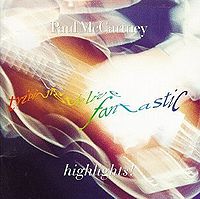 As for live performances of “Hello Goodbye,” Paul put it to some good use. He touched on the song during his “World Tour,” which spanned from September 26th, 1989 to July 29th, 1990, only performing the “Maori Finale” as an appropriate conclusion to his current single “Put It There.” (This can be heard on the live albums “Tripping The Live Fantastic” and the US version of “Tripping The Live Fantastic: Highlights!”) His “Driving World” tour, running from April 1st to November 18th, 2002, featured the entire “Hello Goodbye” as his opening song, as did his “Back In The World” tour, which spanned from March 25th to June 1st, 2003. He periodically opened his shows with the song during his “Up And Coming” tour, which ran from March 28th, 2010 to June 10th, 2011, as well as during his “On The Run” tour from July 15th, 2011 to November 29th, 2012. As for live performances of “Hello Goodbye,” Paul put it to some good use. He touched on the song during his “World Tour,” which spanned from September 26th, 1989 to July 29th, 1990, only performing the “Maori Finale” as an appropriate conclusion to his current single “Put It There.” (This can be heard on the live albums “Tripping The Live Fantastic” and the US version of “Tripping The Live Fantastic: Highlights!”) His “Driving World” tour, running from April 1st to November 18th, 2002, featured the entire “Hello Goodbye” as his opening song, as did his “Back In The World” tour, which spanned from March 25th to June 1st, 2003. He periodically opened his shows with the song during his “Up And Coming” tour, which ran from March 28th, 2010 to June 10th, 2011, as well as during his “On The Run” tour from July 15th, 2011 to November 29th, 2012.
Conclusion
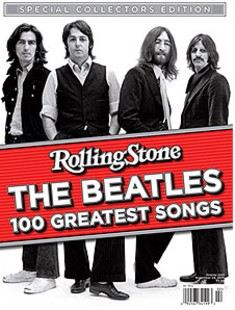 To this day, critics have not held the commercially successful “Hello Goodbye” in very high esteem, relegating it as “blandly catchy,” “inconsequential,” having "meager melodic dividends" and “innocuous.” Rolling Stone magazine’s special collector’s edition of “The Beatles 100 Greatest Songs” lists this chart topping song, somewhat humiliatingly, at #100. To this day, critics have not held the commercially successful “Hello Goodbye” in very high esteem, relegating it as “blandly catchy,” “inconsequential,” having "meager melodic dividends" and “innocuous.” Rolling Stone magazine’s special collector’s edition of “The Beatles 100 Greatest Songs” lists this chart topping song, somewhat humiliatingly, at #100.
As for its appeal at the time, Britain’s New Musical Express summed up their review of the song quite appropriately by pronouncing it “the complete answer for those who think The Beatles are going too way out.” As far as The Beatles were concerned, the "summer of love" was over at the end of 1967 and, with this release, they waved “Goodbye” to psychedelia forever.
Song Summary
“Hello Goodbye”
Written by: John Lennon / Paul McCartney
- Song Written: August, 1967
- Song Recorded: October 2, 19, 20, 25 and November 2, 1967
- First US Release Date: November 27, 1967
- US Single Release: Capitol #2056
- Highest Chart Position: #1 (3 weeks)
- First US Album Release: Capitol #SMAL-2835 “Magical Mystery Tour”
- British Album Release: Apple #PSCP 718 “The Beatles/1967-1970”
- Length: 3:24
- Key: C major
- Producer: George Martin
- Engineers: Ken Scott, Graham Kirkby, Richard Lush, Phil McDonald, Geoff Emerick, Jeff Jarratt
Instrumentation (most likely):
- Paul McCartney - Lead Vocals, Piano (Hamburg Steinway Baby Grand), Bass (1964 Rickenbacker 4001 S), conga drums
- John Lennon - Organ (Hammond B-3), Piano (Hamburg Steinway Baby Grand), Background Vocals, handclaps
- George Harrison - Lead Guitar (1961 Sonic Blue Fender Stratocaster), tambourine, Background Vocals, handclaps
- Ringo Starr - Drums (1964 Ludwig Super Classic Black Oyster Pearl), maracas
- Ken Essex - Viola
- Leo Birnbaum - Viola
Written and compiled by Dave Rybaczewski
|
IF YOU WOULD LIKE TO MAKE A DONATION TO KEEP THIS WEBSITE UP AND RUNNING, PLEASE CLICK BELOW!
|